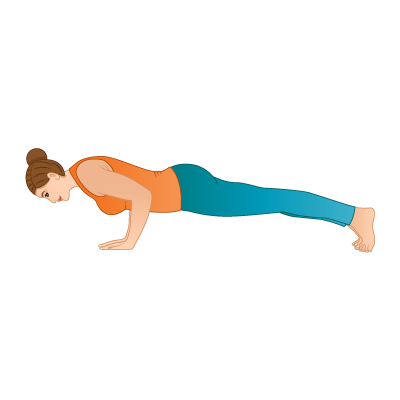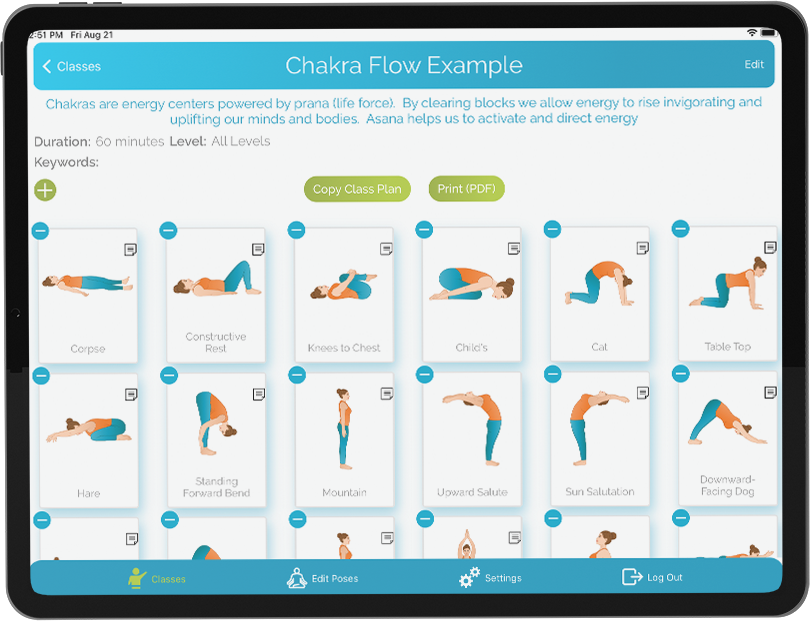4 ways to teach Yoga for Weight Loss
August 18, 2016 | 5 min read
Scientific research is increasingly supporting the idea that yoga can lead to weight loss. One study by medical researcher and practicing yogi Alan Kristal, DPH, MPH, followed 15,500 healthy but overweight Americans between the ages of 45-55 over a period of time. Those practicing yoga who were overweight to start with lost about 5 pounds. During the same time period those not practicing yoga gained 14 pounds. In another study, a group of heart patients were put on a low fat vegetarian diet and provided with yoga classes. Each patient lost an average of 24 pounds. Even more interesting is medical research that suggests when we are stressed, our bodies release more of the stress hormone cortisol. High levels of cortisol are linked to heart, disease, diabetes and fatty deposits. So, even gentle yoga can promote weight loss by reducing stress and cortisol.
Designing a yoga for Weight Loss Program
To design a yoga for weight loss program, requires careful consideration of your target group, their fitness levels and specialised needs. For example, a high intensity yoga class would not be suitable for a group of overweight, middle-age beginners with heart problems. That group would gain more benefits from a gentle yoga class, focusing on reducing stress and improving overall health and wellness. A short intense sweat and stretch class is suitable for the twenty-to-thirty something’s. Additional markets include teens, seniors and executives needing to shed a few pounds and lift their energy levels. Keep the sessions short, creative and energetic. An hour long ‘express’ class for busy Moms, a yoga-to-go lunchtime class for college students, stress and belly buster chair yoga in boardroom just few ideas for target and market classes.
Build your sequence around fat burning, metabolism boosting poses
Sun salutations are ideal warm-ups for weight loss yoga. Their purpose and effect is to build heat, warm the muscles and build energy. Try varying and modified salutes, switch it up for a hot and sweaty work-out, including plenty of jump backs and transitions, bringing it down to the chair or knees for seniors and bigger bodies. At every level, your clients will reap the weight loss benefits of sun salutes, reducing stress and tension with breath-synchronised movements and stretches. The simple motion of raising the arms increases the heart rate which in turn stimulates the metabolism and circulatory systems. Standing forward bends (even half-way) tone the abs, while simultaneously massaging and stimulating the digestive organs supporting the metabolic process.
Standing postures including the warrior poses, triangle and pyramid promote fitness and weight loss. The action of lifting the sternum, dropping the shoulders and pulling in the belly, tones the back and belly, improving posture which in turn helps us to breathe easier and deeper, igniting the digestive system that burns calories and makes energy. Standing poses and balances work to tone and strengthen the legs and feet, improving their appearance. .
Follow your standing sequence with some revolving variations of side angle, triangle or seated spinal twist. Twists are really effective for trimming abs, back and hips. Boat pose, plank and side plank provide additional opportunities for strengthening the core and back muscles. Inversions such as upward bow, shoulder stand and headstand are useful counter poses as they directly affect the thyroid, burning fat.
Close your class with instruction on breathing, wellness and nutrition
Many postural yoga classes focus on teaching yogasana, skimping on the basics of pranayama and meditation. The controlled use of breath is central to the metabolic, detoxification and restorative processes in yoga. The controlled use of breath can stimulate or calm, cool or warm the body. Daily practice of breathing and meditation has been proven to reduce stress and improve mood.
Some medical researchers such as Alan Kristal believe that yoga promotes weight loss, because participants adopt more mindful eating habits, because they are relaxed and feeling happier with themselves. To support this process, most traditional yoga for wellness classes will include a discussion of diet, nutrition and eating for your body type. Ayuverda, the ancient medical system of India describes a holistic approach to diet and nutrition based on an individual’s body type. The three Ayuverdic doshas (body types) are called Vata, Pitta and Kapha. To determine their dominant body types, you can provide your students with a short questionnaire that includes recommended foods and exercise.
Employ mindful language when marketing your yoga for weight loss class
Now that yoga is doing a 6 billion dollar a year business, many teachers have fallen into the trap of commercial marketing hype. One high profile example is Sadie Nardini, who ran a series of Facebook ads for her online classes with the leader. ‘Get a summer yoga body’. This landed her in hot water with yoga activists who accused her of counteracting the benefits of yoga with media stereotypes of models with ideal bodies. To avoid this pitfall, err on the side of caution, and be clear about the service you are providing. You don’t want to sell your yoga classes like a slimming program. Blogger and yogi, Steve Abbott advises changing the language, using lifestyle, wellness and positive change, rather making a direct marketing association between yoga and skinny.
Brenda Hamlet is a RYT 200 yoga teacher and journalist. More information about Brenda can be found at https://www.facebook.com/brendahamletyoga
Posted in Teaching Tips




